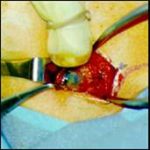Emotional Reaction to a Diagnosis of Breast Cancer
Naturally, the reaction to being told that you have breast cancer is very emotional. Feelings of fear, helplessness, guilt and depression are common. The initial reaction is often denial and rejection of the diagnosis: “the test results must be wrong”, “it cannot be true that I have cancer”.
This denial response is a defence mechanism. It allows a person to adjust to their diagnosis and to eventually acknowledge the fact that they have cancer. All breast cancer units have a specialist nurse with counselling skills to help patients and their families, by providing information and exploring their fears and anxieties.
What are the Treatment Options for Breast Cancer?
The treatment of breast cancer depends on whether it is the non-invasive (DCIS or LCIS) type or not. We will discuss the treatment of invasive type breast cancer first, and then move on to the treatment of the non-invasive type.
As mentioned earlier, the aim of breast screening is to detect the cancer at an early stage in women who appear well and do not have any symptoms of the disease. The earlier that a breast cancer is detected, the more likely it is to be treatable. ‘Early’ breast cancer implies that the cancer lump is relatively small, has not invaded the overlying skin or underlying chest wall, and that the lymph glands in the armpit are not involved at all (or are only minimally involved).
It also means that the cancer has not spread (metastasised) to any other part of the body.
Before any treatment is begun, the breast specialist must first be certain as to whether or not the cancer has spread beyond the breast by arranging various tests called ‘staging investigations’ (discussed in the next section). Once the specialist has the results of these tests, the best treatment option for that particular patient can be determined.
Types of treatment for breast cancer include:
-
- Surgery
- Radiotherapy
- Chemotherapy
- Hormone therapy
- Immuno therapy
Staging Investigations
As mentioned previously, in order to provide the most effective treatment for a breast cancer, the specialist must know if that cancer has spread beyond the breast. All breast cancer patients with symptoms suggestive of spread should have staging tests. Various tests are carried out to do just this and include the following:
- Blood tests
- A whole body scan known as a PET-CT scan (Positron Emission Tomography – Computerised Tomography)
Staging tests are not necessary if the breast cancer is of the non-invasive type or the invasive cancer is smaller than 3cm and armpit glands appear normal.
Surgery – What are the Surgical Options?
Each patient should play an active role in selecting the appropriate surgical treatment with the specialist. Studies have shown that removal of the whole breast (mastectomy) does not prolong life when compared with removal of the cancer lump alone (lumpectomy). As lumpectomy preserves more of the breast, it is associated with a better body image compared with total mastectomy.
If you have a successful lumpectomy i.e. the lump was completely excised with clear margins, then radiotherapy to the whole breast is usually required. In some cases (approximately one third) mastectomy is the preferred treatment option.
It is also advisable to remove some lymph glands from the armpit (this is called axillary dissection – axilla means ‘armpit’) if the cancer is invasive. If the lymph glands do not contain cancer, then the outlook for the patient is very good. However, the more lymph glands that contain cancer and the bigger the cancer is, the greater the chances are that the cancer may come back after treatment. This helps the specialist to predict the behaviour of the breast cancer, and to know if more aggressive treatments, such as chemotherapy, are needed.
Removal of the lymph glands increases the chances of arm swelling (lymphedema), arm stiffness and pain. Therefore it is preferable to remove the minimum number of glands. The Sentinel Node Biopsy technique allows accurate sampling of the glands. Patients with invasive breast cancer who do not have enlarged glands in the armpit on clinical examination are suitable for this technique. It involves the removal of approximately two glands using a blue dye and/or a radioactive isotope tracer) through a small cosmetic scar. The sentinel glands (blue and/or hot) can be examined by the pathologist while the patient is under anesthesia. If these sentinel glands are clear then no further armpit surgery is needed and the patient can be spared the potential adverse effects of complete glands clearance which occur in 10% of patients.
However if the sentinel glands contain cancer cells then all the armpits glands should be removed or have radiotherapy to the armpit. This is usually needed in 25% of patients with invasive breast cancer. However, patients with 1-2 involved lympth glands who have successfully lumpectomy can be spared the need of removal of all lympth glands.
For more information on the management of the axilla when the sentinel node biopsy is positive from articles written by Professor K Mokbel




